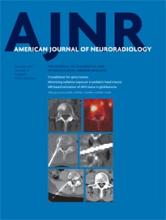Abstract
SUMMARY: A new classification is proposed for cerebral aneurysms treated with any endovascular technique, for example, coiling with or without adjunctive devices, flow diversion, intrasaccular flow modifiers, or any combination of the above. Raymond-Roy Occlusion Classification is expanded with novel subgroups such as class 1 represents complete occlusion and is subdivided if a branch is integrated to, or originated from, the aneurysm sac; class 2 represents neck filling; class 3 represents incomplete occlusion with aneurysm filling as in the previous classification; and class 4 describes the immediate postoperative status after extra- or intrasaccular flow modification treatment. A new concept, “stable remodeling,” is included as class 5, which represents filling in the neck region that stays unchanged or reduced, as shown with at least 2 consecutive control angiographies, at least 6 months apart, for not <1 year, or the remodeled appearance of a dilated and/or tortuous vessel in continuation with the parent artery without sac filling.
ABBREVIATION:
- FM
- flow modifier
- © 2016 by American Journal of Neuroradiology
Indicates open access to non-subscribers at www.ajnr.org












